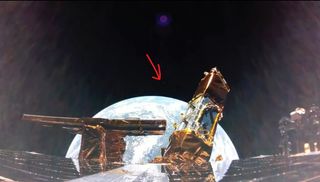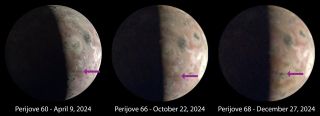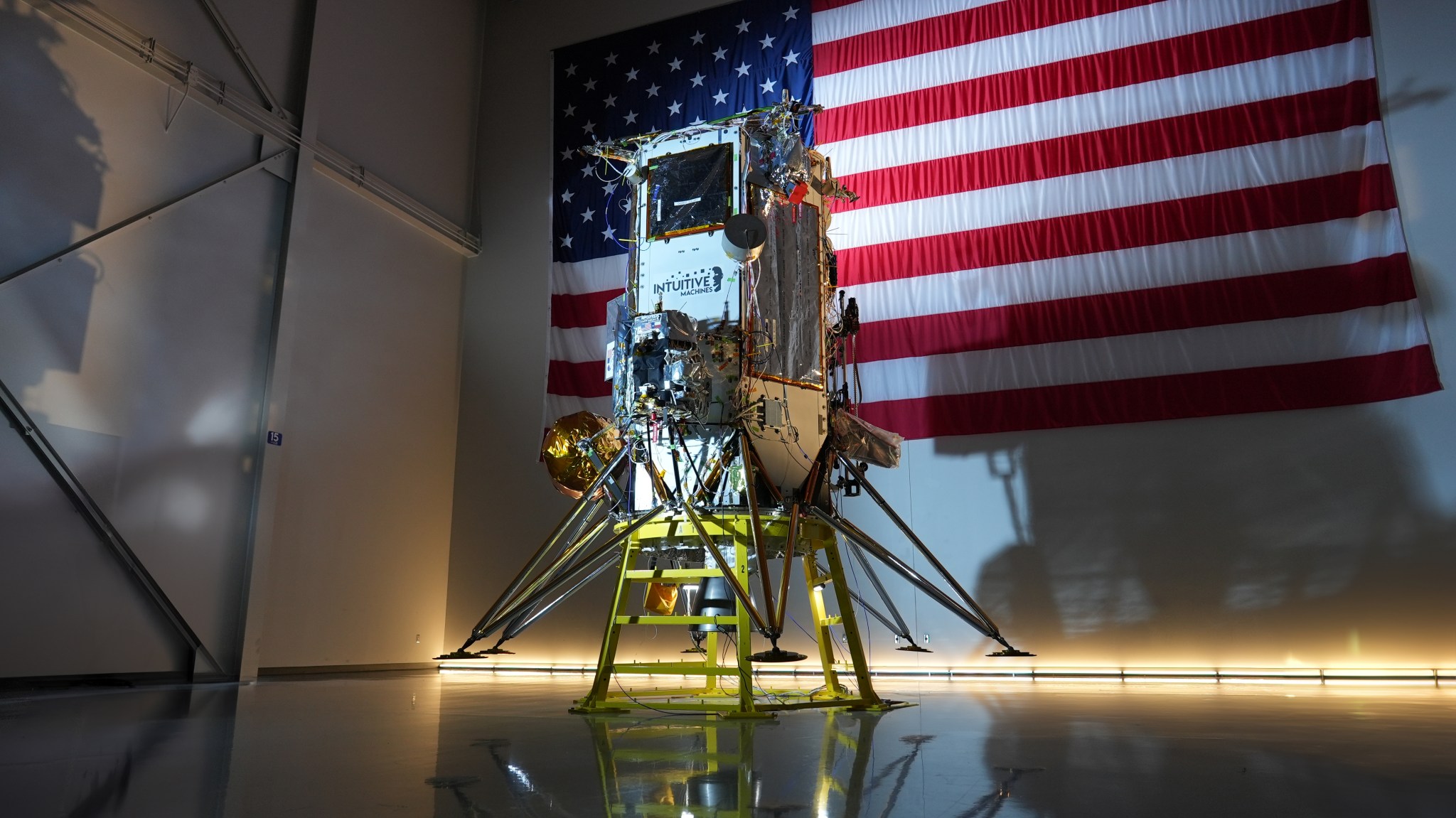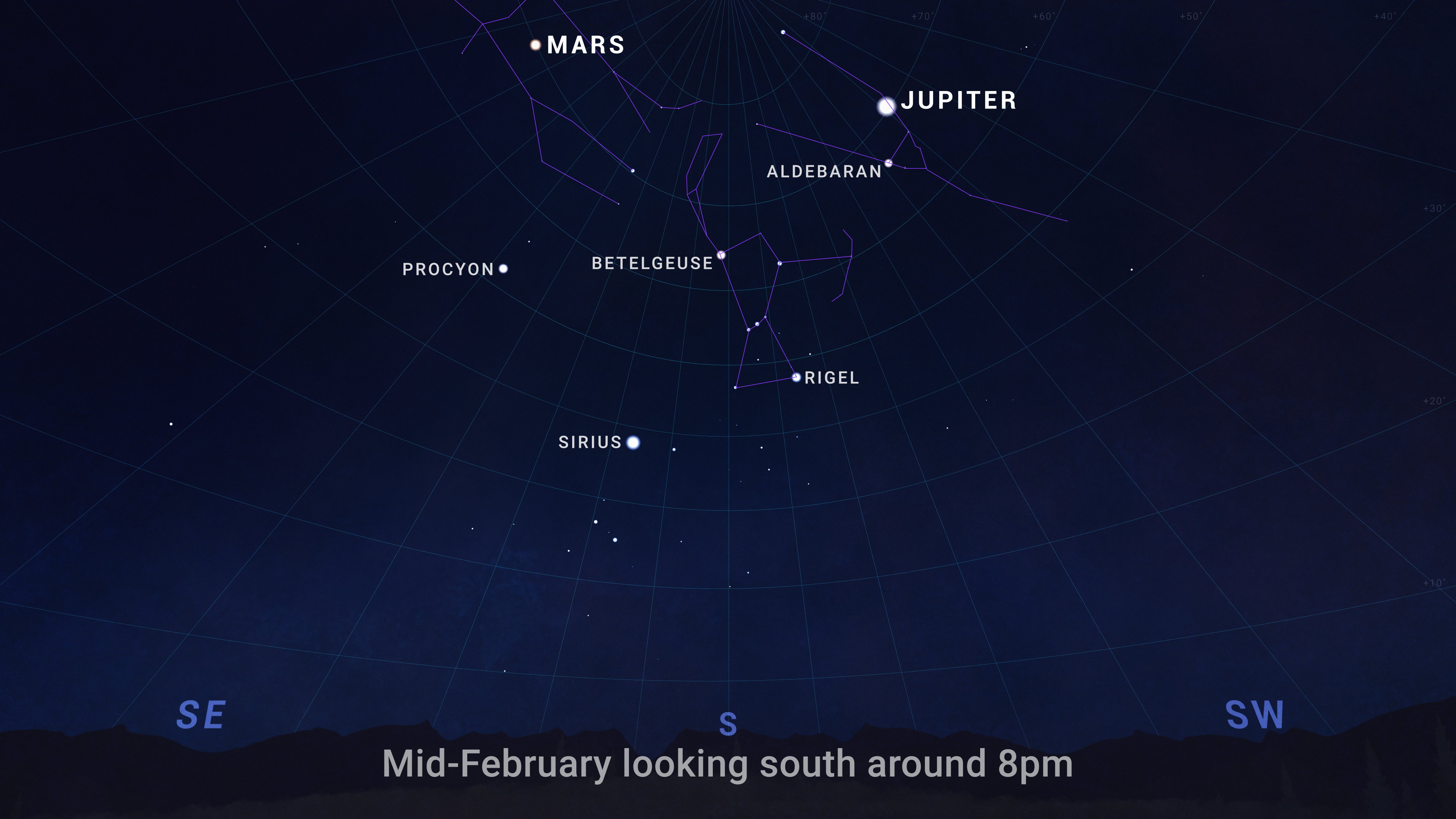Blue Ghost, the “little lander” from Firefly Aerospace that’s headed to the moon, has captured the littlest lunar eclipse ever (as well as our hearts). Firefly contracted SpaceX to launch the company’s “Ghost Riders in the Sky” mission last month (Jan. 15) on a Falcon 9 rocket, out of NASA’s Kennedy Space Center in Florida. Since then, the lander has been camped out in Earth orbit, undergoing systems checks and preparing to light its engines for a translunar injection burn, which will propel the probe on a four-day trajectory for…
Read MoreDay: January 31, 2025
NASA’s Juno spacecraft watches most powerful volcanic event ever seen on Jupiter’s moon Io
Even for Jupiter’s moon Io, the most volcanic body in the solar system, a recent volcanic event witnessed by NASA’s Juno spacecraft takes the biscuit. The event was just one eruption centralized in a newly found hotspot region of Io estimated to be larger than Lake Superior on Earth. The currently unnamed region is so powerful that the energy it belts out is equivalent to six times the energy produced by all of Earth’s power plants combined. The team behind these findings used data collected by Juno, which made flybys…
Read MoreNASA to Talk Science, Tech Aboard Next Intuitive Machines Moon Flight
As part of NASA’s CLPS (Commercial Lunar Payload Services) initiative and Artemis campaign, Intuitive Machines’ second delivery to the Moon will carry NASA technology demonstrations and science investigations on their Nova-C class lunar lander. Credit: Intuitive Machines NASA will host a media teleconference at 1 p.m. EST Friday, Feb. 7, to discuss the agency’s science and technology flying aboard Intuitive Machines’ second flight to the Moon. The mission is part of NASA’s CLPS (Commercial Lunar Payload Services) initiative and Artemis campaign to establish a long-term lunar presence. Audio of the…
Read MoreNASA’s new SPHEREx space telescope to launch in February — it can do what the JWST can’t
In late February, if all goes to plan, a new character will enter NASA’s space telescope epic. It’s an eggshell white, conical probe named SPHEREx, which (get ready for a mouthful) stands for Spectro-Photometer for the History of the Universe, Epoch of Reionization and Ices Explorer. And, because it works with infrared light, SPHEREx is meant to reveal things even the trailblazing James Webb Space Telescope cannot. “Taking a snapshot with JWST is like taking a picture of a person,” Shawn Domagal-Goldman, acting director of the Astrophysics Division at NASA…
Read MoreWhat’s Up: February 2025 Skywatching Tips from NASA
Skywatching Skywatching Home What’s Up Eclipses Explore the Night Sky Night Sky Network More Tips and Guides FAQ Download the Video A Month of Bright Planets Venus blazes at its brightest for the year after sunset, then Mars and Jupiter to rule the night amid the menagerie of bright winter stars. Skywatching Highlights All Month – Planet Visibility: Mercury: Pops up just above the horizon in late February, looking relatively bright as sunset fades Venus: Looking brilliant in the west after sunset all month Mars: Bright and amber-orange colored, high…
Read MoreNASA Radar Imagery Reveals Details About Los Angeles-Area Landslides
NASA’s UAVSAR airborne radar instrument captured data in fall 2024 showing the motion of landslides on the Palos Verdes Peninsula following record-breaking rainfall in Southern California in 2023 and another heavy-precipitation winter in 2024. Darker red indicates faster motion. NASA Earth Observatory Analysis of data from NASA radar aboard an airplane shows that the decades-old active landslide area on the Palos Verdes Peninsula has expanded. Researchers at NASA’s Jet Propulsion Laboratory in Southern California used data from an airborne radar to measure the movement of the slow-moving landslides on the…
Read MoreBuilding an Antenna
A crane lowers the 112-foot-wide (34-meter-wide) steel framework for the Deep Space Station 23 (DSS-23) reflector dish into position on Dec. 18, 2024, at the Deep Space Network’s Goldstone Space Communications Complex near Barstow, California. A multi-frequency beam waveguide antenna, DSS-23 will boost the DSN’s capacity and enhance NASA’s deep space communications capabilities for decades to come.
Read More




